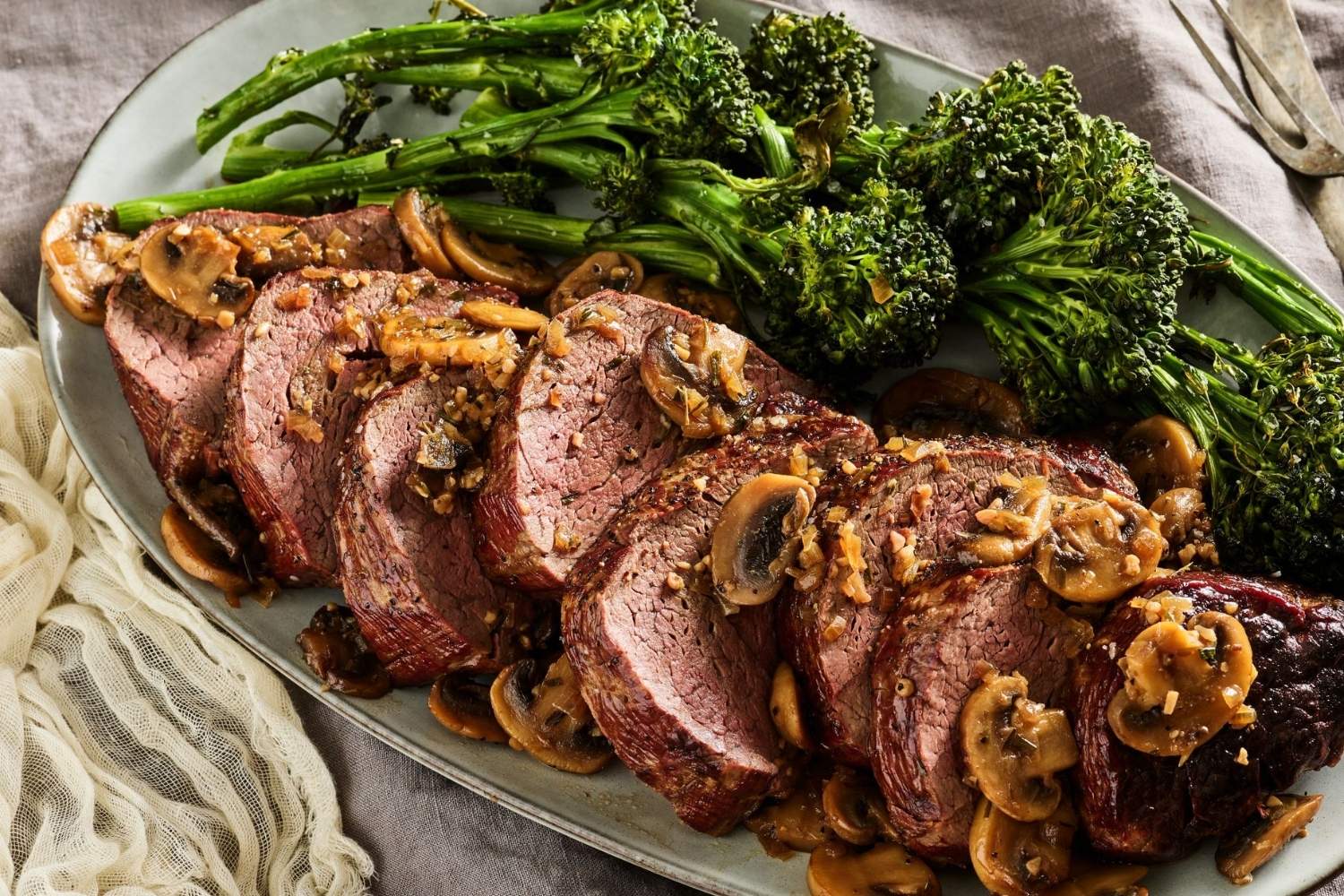
What is Chateaubriand? Chateaubriand is a classic French dish that features a thick cut of beef tenderloin, typically served with a rich sauce and often accompanied by vegetables. Named after the French writer and diplomat François-René de Chateaubriand, this dish has become a symbol of fine dining and culinary excellence. The beef is usually grilled or broiled to perfection, ensuring a tender, juicy experience with every bite. Whether you're a food enthusiast or just curious about gourmet cuisine, understanding the origins and preparation of Chateaubriand can elevate your appreciation for this timeless delicacy.
What is Chateaubriand?
Chateaubriand is a term that can refer to both a famous French writer and a luxurious cut of beef. Let's dive into some fascinating facts about both.
Chateaubriand the Writer
François-René de Chateaubriand was a notable French writer, politician, diplomat, and historian. His works and life have left a significant mark on French literature and history.
- Born in 1768, Chateaubriand is often considered the father of French Romanticism.
- His most famous work, "Atala," was published in 1801 and tells the tragic love story of two Native Americans.
- Chateaubriand served as an ambassador for France in various countries, including the United Kingdom and the United States.
- He wrote "Memoirs from Beyond the Grave," an autobiographical work that provides a detailed account of his life and times.
- Chateaubriand was exiled during the French Revolution due to his royalist sympathies.
- He founded the literary magazine "Le Conservateur" in 1818, which became a platform for his political views.
- Chateaubriand was a key figure in the Bourbon Restoration, helping to restore the monarchy in France.
- His travel writings, such as "Itinerary from Paris to Jerusalem," influenced many future travel writers.
- Chateaubriand's influence extended beyond literature; he also played a role in shaping French foreign policy.
- He was buried in a tomb on the Grand Bé, a tidal island near Saint-Malo, his birthplace.
Chateaubriand the Beef
Chateaubriand is also a term used to describe a particular cut of beef, known for its tenderness and flavor. This cut is often associated with fine dining and gourmet cuisine.
- The Chateaubriand cut comes from the thickest part of the tenderloin, making it exceptionally tender.
- It is typically served as a roast, often accompanied by a rich sauce like Béarnaise.
- The dish is named after François-René de Chateaubriand, although the exact reason for this naming is unclear.
- Chateaubriand is usually prepared for two people, making it a popular choice for romantic dinners.
- The meat is often seared at high temperatures to create a flavorful crust while keeping the inside juicy.
- Chateaubriand is often served with vegetables and potatoes, making it a complete meal.
- The dish became popular in the 19th century and remains a staple in French cuisine.
- It is considered one of the most luxurious cuts of beef, often found on the menus of high-end restaurants.
- Chateaubriand is sometimes confused with filet mignon, but it is actually a larger cut.
- The preparation of Chateaubriand requires skill and precision, making it a favorite among experienced chefs.
Chateaubriand's Influence on Culture
Both the writer and the beef have had a lasting impact on culture, each in their unique way.
- Chateaubriand's literary works have been translated into multiple languages, influencing writers worldwide.
- His political writings and actions have been studied extensively in French history courses.
- The Chateaubriand Fellowship is a prestigious scholarship for American students to study in France, named in his honor.
- Chateaubriand's name is often associated with luxury and sophistication, whether in literature or cuisine.
- The writer's influence extends to modern French literature, with many authors citing him as an inspiration.
- Chateaubriand's works are still widely read and studied, making him a timeless figure in literature.
- The beef dish named after him is a symbol of fine dining and culinary excellence.
- Chateaubriand's life and works have been the subject of numerous biographies and academic studies.
- The writer's contributions to Romanticism have shaped the genre and influenced countless other writers.
- Chateaubriand's diplomatic efforts helped shape the political landscape of 19th-century Europe.
Fun Facts About Chateaubriand
Here are some lesser-known but equally fascinating facts about Chateaubriand.
- Chateaubriand was a passionate gardener and spent much of his later life tending to his garden.
- He was a strong advocate for the preservation of historical monuments in France.
- Chateaubriand's love for nature is evident in his detailed descriptions of landscapes in his writings.
- He was a mentor to many young writers, helping to shape the next generation of French literature.
- Chateaubriand's influence extended to music, with composers creating works inspired by his writings.
- The writer's legacy is celebrated annually in Saint-Malo, with events and readings dedicated to his life and works.
Final Thoughts on Chateaubriand
Chateaubriand isn't just a steak; it's a slice of history. From its French origins to its culinary prestige, this dish has a story worth telling. Whether you're a foodie or a history buff, knowing these 36 facts adds flavor to your next dining experience. Next time you order Chateaubriand, you'll appreciate the rich heritage behind every bite. It's not just about the tender meat; it's about the legacy and tradition that make it special. So, go ahead, impress your friends with your newfound knowledge. Enjoy the meal, savor the history, and remember, every dish has a story.
Was this page helpful?
Our commitment to delivering trustworthy and engaging content is at the heart of what we do. Each fact on our site is contributed by real users like you, bringing a wealth of diverse insights and information. To ensure the highest standards of accuracy and reliability, our dedicated editors meticulously review each submission. This process guarantees that the facts we share are not only fascinating but also credible. Trust in our commitment to quality and authenticity as you explore and learn with us.
